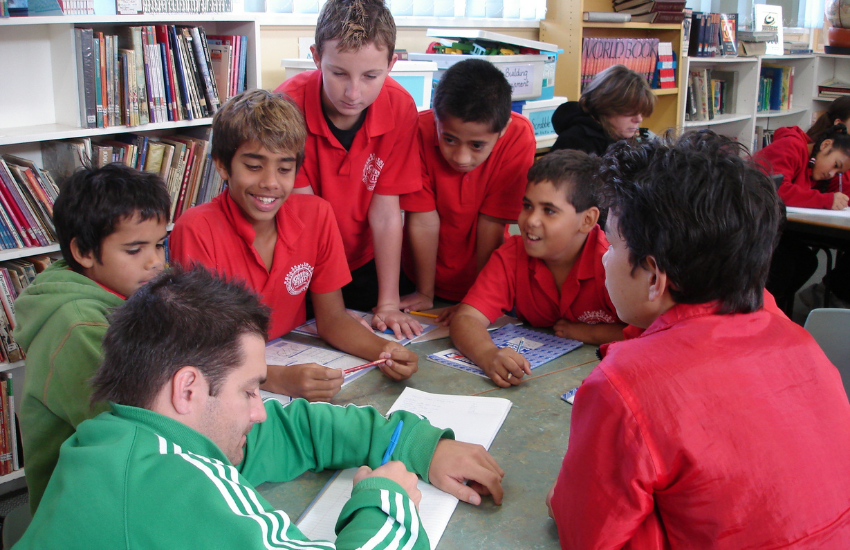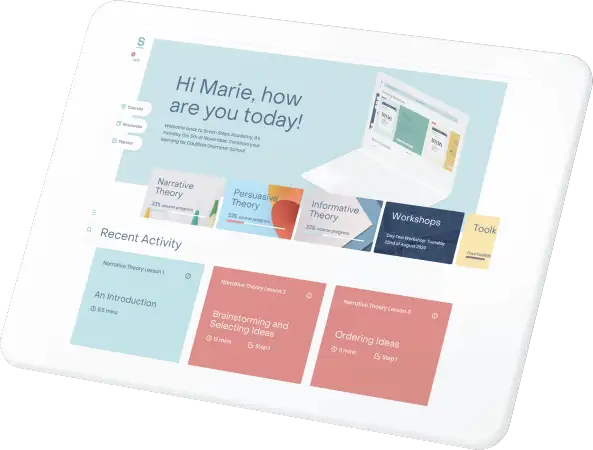Brainstorming, either in a group or alone, is one of the most powerful tools of creativity. Generating ideas takes time and sadly we often don’t respect that time. There is a tendency in classrooms to want to produce written work as proof that students are learning. However, how can you prove students are learning how to be creative and come up with original ideas?

The first crucial step of writing is brainstorming, ask any author. They often spend at least a third of their time coming up with ideas. This is the starting point for creativity in the writing process. Yet how many of us teach brainstorming and give students time to practise and master the skill?
If you really want to improve students’ persuasive writing, give them time to come up with great ideas. Great ideas are the basis for strong arguments (body paragraphs), engaging introductions (Sizzling Starts) and powerful conclusions (Endings with Impact). Here are the top three tips to help students brainstorm and generate ideas:
Brainstorming tips
Tip 1: Collaboration
Work in groups and use the energy and brains of others to generate ideas. Collaborating and piggy backing off each other’s ideas makes everyone more creative. (It usually inspires some healthy competition as well!) TV scriptwriters use this technique, working in teams of 3 to 5 to come up with ideas and plotlines fast.

For instance, a topic such as ‘The most important person in your life’ may generate a brainstorming session like this:
My Mum is the most important.
Why?
She gave birth to me. Looks after me.
But what about the Dalai Lama? He is an amazing person.
Yeah, but he doesn’t affect my life.
Politicians? They rule us.
Nah.
Teachers? Remember Ms J? She was cool.
Can you see how different perspectives come into play and can bring the ideas up to a much higher level?
[Related blog]: Creativity in the classroom – practice makes perfect
Tip 2: Use visual stimuli
Is your topic ‘Country living is better than city living?’ Google images can help generate ideas. Just put in ‘country life’ and see the inspiring images of peaceful scenery, happy kids, clean fresh air. There aren’t many pictures of flies, hard work and the heat, but hey just search for ‘people working hard farming’ for an alternative view!
Or want a rebuttal? Type in ‘worst thing about living in a city’ for some more inspiration.
Tip 3: Ask ‘What if?’
Do you have a persuasive piece about driftnet fishing? Asking ‘What if’ questions – ‘What if I was a dolphin, what would I say?’ – can help students think outside the box.
The waters are warm where I live and I love to play. I can surf waves coming into the shore, hear the excited sounds from humans, relax in the shoreline seas. But I don’t go near the shore anymore – that’s where my mother died.
There is something about the boats of the humans, something they trail after them to catch fish that we can’t see with our sonar and can’t escape with our strength. Driftnet fishing they call it. I stay far out to sea now, in the colder waters, far from humans.
Brainstorming is always seen as ‘fluffy’ and that is frustrating. People think of it as a quick activity to do before the ‘real’ business of writing. However, the generation of ideas is actually the real business of writing – ask any author. What’s more, brainstorming is a crucial starting point for any form of innovation and therefore the development of this skill also has relevance beyond the writing classroom. Give students time to ‘play’ with ideas, dig deeper and give them the building blocks for creativity.
Try the free Persuasive Lesson Plan for Step 1 and put these brainstorming tips into practice.

Step 2: Sizzling Starts is fun to teach, easy to learn and will have your students cheering for more!


